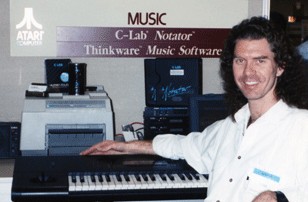-
(b.) -1928 December 13(d.)2012 April 10
Bio/Description
A businessman, best known for founding Commodore International - manufacturer of the Commodore PET, Commodore 64, Commodore 128, Commodore Amiga, and other Commodore models of home computers. Born into a Jewish family in Ł?dź, Poland, his family was transported by German occupiers to the Jewish ghetto in Ł?dź, where he worked in a garment factory after the German invasion of Poland in 1939. When the ghettos were liquidated his family was sent to the Auschwitz concentration camp. He was examined by Dr. Mengele and selected for a work party, after which he and his father were sent to the labor camp Ahlem near Hanover, while his mother remained at Auschwitz. Like many other inmates, his father was reported to have died of Typhus in the work camp; however, he believes his father was killed by an injection of gasoline. He was rescued from the labor camp in April 1945 by the 84th Infantry Division. In November 1947, he emigrated to the United States. He soon joined the army, where he learned how to repair office equipment, including typewriters. In 1953, while working as a taxi driver, he bought a shop in the Bronx to repair office machinery, and named it Commodore Portable Typewriter. He secured a $25,000 loan for the business from a U.S. Army entitlement. In 1955, he signed a deal with a Czechoslovakia company to assemble and sell their typewriters in North America. However, as Czechoslovakia was part of the Warsaw Pact, they could not be imported directly into the U.S., so he set up Commodore Business Machines in Toronto. He wanted a military-style name for his company, but names like Admiral and General were already taken, so he settled on the Commodore name. In 1962, Commodore went public. The arrival of Japanese typewriters in the U.S. market made the market unprofitable, and struggling for cash; so the company sold 17% of its stock to Canadian businessman Irving Gould, taking $400,000. They used this cash to re-launch the company in the adding machine business, which was profitable for a time before the Japanese entered this field as well. Stung twice by the same source, He then traveled to Japan at Gould?s suggestion, to learn why they were able to outcompete them in their own local markets. It was during this trip that he saw the first digital calculators, and decided that the mechanical adding machine was a dead end. Combining an LED display from Bowmar and an integrated circuit from Texas Instruments (TI), Commodore released its first calculators and found a ready market. However, after slowly realizing the size of the market, TI decided to cut Commodore out of the middle and released their own calculators at a price point below the price that. TI sold just the chips to Commodore. Gould once again rescued the company, injecting another $3 million which allowed Commodore to purchase MOS Technology, Inc. an IC design and semiconductor manufacturer, which also supplied Commodore with calculator ICs. When their lead designer, Chuck Peddle told him that calculators were a dead end and computers were the future, he told Chuck to build one to prove the point. Peddle responded with the Commodore PET, based on their MOS Technology 6502 processor. It was first shown publicly at the Chicago Consumer Electronics Show in 1977, and soon the company was receiving 50 calls a day from dealers wanting to stock the design. The PET would go on to be a success ? especially in the education field, where its all-in-one design was a major advantage. Much of their success with the PET came from the business decision to sell directly to large customers, instead of forcing them to buy through a dealer network. But, as prices dropped and the market matured, the monochrome (green text on black screen) PET was at a disadvantage in the market when compared to machines like the Apple II and Atari 800, which offered color graphics, and could be hooked to a television as an inexpensive display. Commodore responded with the VIC20, and then the Commodore 64, which would go on to be the best-selling home computer of all time. It was during this time period that he coined the famous phrase, "We need to build computers for the masses, not the classes." On 13 January 1984, he resigned from Commodore. After a short break from the computer industry, he formed a new company named Tramel Technology, Ltd., in order to design and sell a next-generation home computer. The company was named "Tramel" to help ensure that it would be pronounced correctly (i.e., "tra - mel" instead of "tra - meal"). On 3 July 1984, Tramel Technology bought the Consumer Division of Atari Inc. from Warner Communications, which had fallen on hard times, due to the video game crash of 1983. TTL was then renamed Atari Corporation. In the late 1980s, he decided to step away from day-to-day operations at Atari, naming his son, Sam, President and CEO. In 1995, Sam had a heart attack, and his father returned to oversee operations. In 1996, he decided to sell Atari to disk-drive manufacturer Jugi Tandon Storage in a reverse merger deal. The newly merged company was named JTS Corporation, and he joined the JTS board.
-
Date of Birth:
1928 December 13 -
Date of Death:
2012 April 10 -
Gender:
Male -
Noted For:
Founder of Commodore International; manufacturer of Commodore models of home computers; including the Commodore PET, Commodore 64, Commodore 128, Commodore Amiga -
Category of Achievement:
-
More Info:


